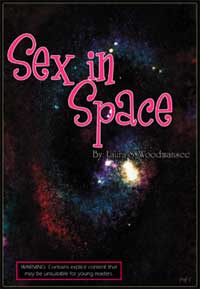Review: Sex in Spaceby Jeff Foust
|
| If someone picks up a book like Sex in Space expecting the subject matter to be erotic or even pornographic, they’ll be sorely disappointed. |
Woodmansee starts with the question most frequently asked about the subject: has anyone had sex in space? There has been no shortage of rumors on the subject, ranging from visits of female cosmonauts to the Salyut and Mir space stations to the flight of husband-and-wife astronauts on a shuttle mission. Reviewing the available evidence, she dismisses some rumors, but while finding no conclusive evidence that humans have had sex in space, she concludes that other claims remain debatable. In some cases, she notes, we may not know for certain unless and until one of the participants decides to come forward.
After reviewing the history of what may or may not have happened in space, Sex in Space examines the various issues associated with sexual activity and its consequences in space. There is a discussion of the challenges and possibilities presented by having sex in weightlessness (including a section titled the “Cosmic Kama Sutra” where anatomically incomplete mannequins illustrate some potential positions), but the book also touches upon the psychological issues associated with sex as well as the serious medical issues posed by pregnancy in space.
If someone picks up a book like Sex in Space expecting the subject matter to be erotic or even pornographic, they’ll be sorely disappointed: one will find more titillation in a typical issue of Maxim instead. Instead, what Sex in Space offers is a serious treatment of a subject that has largely lacked one to date. (One minor gripe: the book could have used another round of editing to catch some of the typos I noticed in the text.) Regardless of whether or not professional astronauts have had sex in space yet or not, it’s likely that tourists soon will, particularly as plans for private orbital spacecraft and habitats take shape. If humanity is move beyond short-term excursions in space and instead truly live there, issues of sex and reproduction will have to be addressed. Sex in Space takes that needed first step of getting past the snickers and blushes the topic usually attracts.
